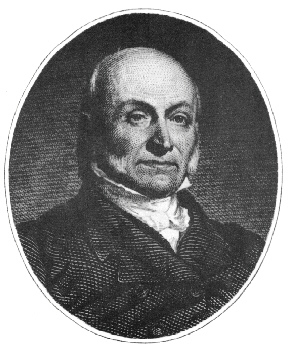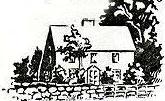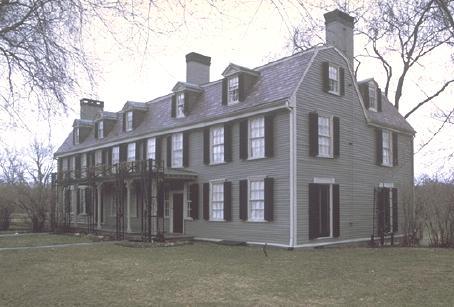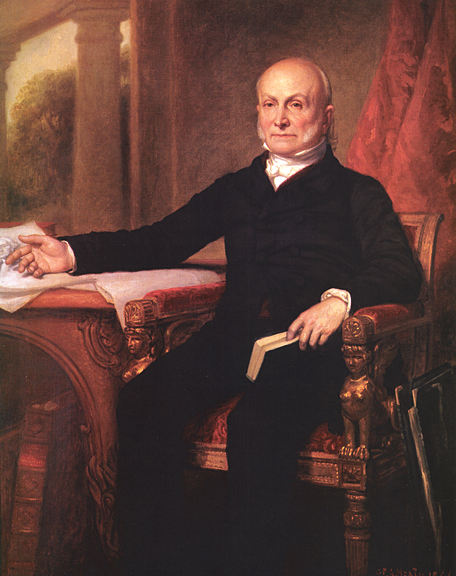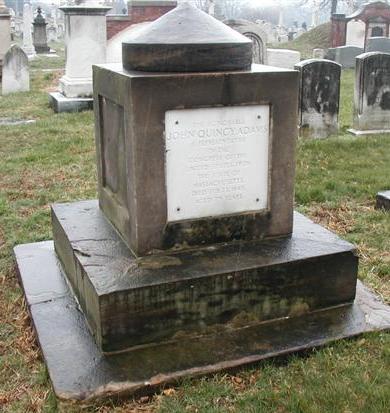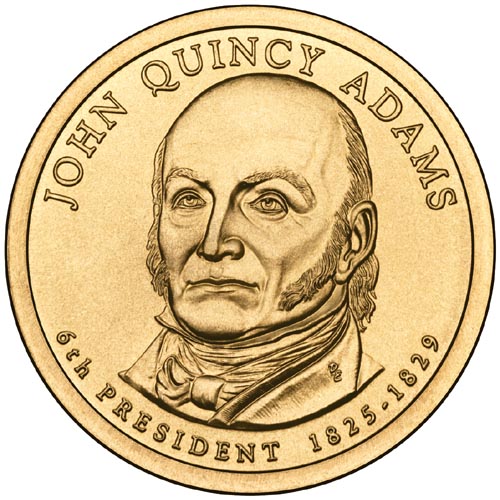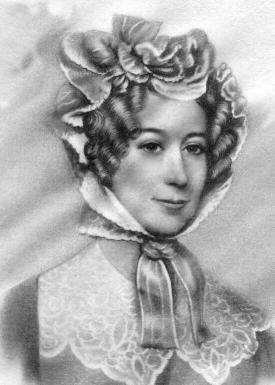
Dibandingkan presiden Tunisia, Mesir atau Yaman, kekuasaan Muammar Gaddafi di Libya jauh lebih panjang. Gaddafi berkuasa sejak ia berhasil melakukan kudeta di Libya pada tahun 1969 hingga hari ini.
Gaddafi belum menunjukkan tanda-tanda untuk "mengalah" pada tuntutan rakyatnya, meski korban sudah berjatuhan. Penguasa Libya yang "nyentrik" itu tidak segan-segan mengerahkan pasukan militernya untuk meredam aksi protes. Bahkan, ia kabarnya memerintahkan para pilot pesawat tempurnya untuk menembaki demonstran antipemerintah.
Jumlah korban tewas dalam ketegangan politik di Libya sudah mencapai 400 orang dan ribuan pengunjuk rasa lainnya mengalami luka-luka. Gaddafi pun mulai kehilangan dukungan dari dalam pemerintahannya sendiri. Duta Besar Libya di Malaysia, mengutuk tindakan represif pasukan Gaddafi dan menyebutnya sebagai pembantaian terhadap Libya. Sementara Dubes Libya di India, dilaporkan mengundurkan diri setelah mendengar Gaddafi mengerahkan pesawat tempur untuk menembaki para demonstran.
Sedemikian nekatkah Gaddafi menghadapi aksi protes rakyatnya sendiri? Analis Timur Tengah, Zvi Bar'el dalam analisanya di surat kabar Haaretz menyatakan, menumbangkan Gaddafi tidak semudah menumbangkan presiden Mesir atau Tunisia.
Ia menulis, sejak berkuasa di Libya, Gaddafi tidak pernah menyebut dirinya sebagai "presiden atau jenderal". Ia selalu menegaskan bahwa kekuasaannya merupakan hasil konsensus umum, atas dasar persaudaraan, setelah kudeta tahun 1969. Dan dengan alasan "persaudaraan" itu, Gaddafi tidak memberi ruang bagi aksi-aksi unjuk rasa dan perubahan rezim di Libya. Aksi-aksi semacam itu dianggap pemberontakan dan pengkhianatan terhadap "saudara yang lebih tua."
Perekonomian Libya relatif stabil dengan pendapatan per kapita setiap tahunnya sekitar 14.000 dollar AS. Gaddafi melakukan investasi di industri manufaktur dan menyerahkan investasi itu hanya pada kroni-kroninya. Sebagai imba balik, Qaddari hanya meminta kroni-kroninya "patuh secara total" pada pemerintahan dan kekuasaannya.
Itulah sebabnya, Gaddafi melihat aksi protes rakyat sebagai "pengkhianatan" yang tidak bisa diselesaikan dengan cara dialog atau pemindahan kekuasaan pada pihak lain karena Muammar Gaddafi-lah sesungguhnya rezim Libya itu sendiri. Institusi pemerintahan dan parlemen di Libya sudah lama mandul. Tak heran jika organisasi-organisasi hak asasi manusia menyebut Libya sebagai negara yang paling buruk di dunia dalam hal hubungan antara pemerintah dengan rakyatnya.
Posisi Gaddafi semakin tak tergoyahkan menyusul pulihnya hubungan bilateral Libya dengan AS, setelah AS menghapus Libya dari dari daftar teroris pada tahun 2007. Tahun 2008, pemerintahan Gaddafi membayar uang kompensasi sebesar 1,4 miliar dollar pada AS, untuk dibagikan bagi para korban aksi-aksi teror yang selama ini dituduhkan AS pada Libya. Sejak itulah, AS mulai kembali "ikut campur" di Libya. Alih-alih mengklaim sebagai negara yang ingin menegakkan demokrasi, AS malah mendukung pemerintahan Gaddafi yang tidak demokratis. AS bahkan bersikap lunak terhadap tindakan represif Gaddafi pada para demonstran. Berbeda dengan kecaman keras AS terhadap tindakan represif Husni Mubarak, saat revolusi Mesir.
Gaddafi juga mengamankan posisinya dengan memberikan jabatan penting pada anak-anaknya sendiri. Anak Gaddafi yang bernama Muttasim, ditunjuk sebagai penasehat keamanan dalam negeri. Anak Gadddafi lainnya, yaitu Khamis ditunjuk sebagai komandan militer senior yang mengepalai Brigade Khamis--salah satu pasukan elit Libya yang sangat terlatih, Saadi ditunjuk sebagai pejabat pemerintahan senior dan Saif al-Islam ditunjuk sebagai kepala kebijakan dan urusan luar negeri Libya.
Sulit diprediksi akan seperti apa akhir dari revolusi rakyat Libya, meski kabar yang beredar menyebutkan bahwa sejumlah komandan batalion angkatan bersenjata Libya mulai berpihak pada rakyat yang melakukan unjuk rasa, termasuk munculnya sosok putera dari pahlawan nasional Libya, Omar Al-Mukhtar yang ikut turun bersama para demontsran dan mendorong kelompok etnis dan politisi di Libya untuk menumbangkan Gaddafi.
Situasi di Libya tidak sama dengan di Tunisia atau Mesir, dimana partai-partai politik, militer dan institusi sipil berfungsi dengan baik. Di Libya, konstitusi disusun berdasarkan apa yang disebut sebagai "Buku Hijau Gaddafi." Di Libya, juga tidak ada partai politik dan tidak ada gerakan Islam yang cukup kuat. Hanya Gaddafi, satu-satunya kekuatan yang mengendalikan militer, institusi pemerintah bahkan kelompok-kelompok etnis yang ada di negeri itu.
Muammar Khadafi Pemimpin Revolusi Libya Yang Fenomenal
February 27, 2011 3 Comments
Muammar Khadafi adalah pemimpin Libya sejak 1969. Jabatan yang disandangnya bukan merupakan jabatan resmi, tetapi ia menyandang “Guide of the First of September Great Revolution of the Socialist People’s Libyan Arab Jamahiriya” atau “Brotherly Leader and Guide of the Revolution”.
Khadafi adalah anak termuda dari sebuah keluarga miskin Badawi (Bedouin) yang nomadik di daerah gurun pasir di Sirte. Dia lahir di Surt, Tripolitania, 7 Juni 1942. Ibunya adalah seorang Yahudi yang mulai memeluk agama Islam sejak usia 9 tahun.
 Hal ini secara teknis membuat Khadafi seorang Yahudi menurut Judaisme. Dia diberikan pendidikan SD tradisional yang religius dan bersekolah di SMU Sebha di Fezzan dari 1956 hingga 1961. Khadafi dan sekelompok kecil teman-temannya yang dia temui di sekolah ini kemudian membentuk kepemimpinan utama dari sebuah kelompok revolusiner militan yang kelak merebut kekuasaan negara Libya. Inspirasi bagi Khadafi adalah Gamal Abdul Nasser, seorang negarawan yang populer di Mesir, yang naik ke takhta kepresidenan dengan meminta persatuan Arab dan menghujat Barat. Pada 1961, Khadafi dikeluarkan dari Sebha karena aktivitas politiknya. Dia kemudian kuliah di Universitas Libya, di mana dia lulus dengan nilai yang sangat baik. Dia lalu bergabung dengan Akademi Militer di Benghazi pada 1963, di mana dia dan beberapa rekan militannya membentuk sebuah kelompok rahasia yang bertujuan menjatuhkan monarki Libya yang pro-Barat. Setelah lulus pada 1965, dia dikirim ke Britania untuk latihan lanjutan, dan kembali pada 1966 sebagai seorang opsir dalam Korps Sinyal.
Hal ini secara teknis membuat Khadafi seorang Yahudi menurut Judaisme. Dia diberikan pendidikan SD tradisional yang religius dan bersekolah di SMU Sebha di Fezzan dari 1956 hingga 1961. Khadafi dan sekelompok kecil teman-temannya yang dia temui di sekolah ini kemudian membentuk kepemimpinan utama dari sebuah kelompok revolusiner militan yang kelak merebut kekuasaan negara Libya. Inspirasi bagi Khadafi adalah Gamal Abdul Nasser, seorang negarawan yang populer di Mesir, yang naik ke takhta kepresidenan dengan meminta persatuan Arab dan menghujat Barat. Pada 1961, Khadafi dikeluarkan dari Sebha karena aktivitas politiknya. Dia kemudian kuliah di Universitas Libya, di mana dia lulus dengan nilai yang sangat baik. Dia lalu bergabung dengan Akademi Militer di Benghazi pada 1963, di mana dia dan beberapa rekan militannya membentuk sebuah kelompok rahasia yang bertujuan menjatuhkan monarki Libya yang pro-Barat. Setelah lulus pada 1965, dia dikirim ke Britania untuk latihan lanjutan, dan kembali pada 1966 sebagai seorang opsir dalam Korps Sinyal.
Khadafi mempunyai delapan anak, tujuh di antaranya lelaki. Putranya yang paling tua, Muhammad Khadafi adalah ketua Komite Olimpiade Libya. Putra tertua kedua Al-Saadi Khadafi, adalah ketua Federasi Sepak Bola Libya, bermain di tim Seri A, Perugia, dan juga bermain film. Satu-satunya putrinya, Ayesha Khadafi, adalah seorang pengacara yang telah bergabung dengan tim pengacara Saddam Hussein,
Khadafi juga mempunyai saham sebesar 7,5% di klub sepak bola Italia, Juventus. Pada 1986, dia menggunakan ejaan Moammar El-Gadhafi. Menurut situs resminya, dia lebih menyukai ejaan Muammar Gadafi, meski di situs web yang sama juga ada ejaan alternatif, al-Gathafi.
Diplomasi Washington
Tahun 1951, Amerika Serikat mendukung kemerdekaan Libya dan disusul peningkatan hubungan sampai tingkat kedutaan. Hubungan Libya-Amerika Serikat terhenti ketika Kapten Muammar Khadafi memimpin Revolusi Al Fatah untuk menyingkirkan Raja Idris pada 1969. Setelah berkuasa, Khadafi yang telah berpangkat kolonel melancarkan revolusi budaya yang mengandung inti penyingkiran semua ideologi dan pengaruh yang berbau asing, seperti kapitalisme dan komunisme.
Ia kemudian mengembangkan masyarakat baru berdasarkan prinsip-prinsip sosialisme Libya dengan semboyan “sosialisme, persatuan, dan kebebasan”. Semenjak ini hubungan kedua negara semakin memburuk dan mencapai titik terendah. Massa yang anti-AS menggelar demonstrasi pro-Iran pada Desember 1979. Massa membakar gedung Kedutaan Besar AS di Tripoli menjadi akhir dari demonstrasi tersebut.
Masih pada tahun 1979, pesawat-pesawat tempur AS menembak jatuh dua pesawat tempur Libya di atas Teluk Sidra. Insiden itu memperburuk hubungan kedua negara. Setelah menyatakan bahwa Libya sebagai “negara sponsor terorisme”, AS menutup kedutannya di Tripoli pada Februari 1980. Sementara, Libya juga menutup kedutaannya di Washington. Pada Januari 1986, Presiden Amerika Serikat Ronald Reagan memerintahkan penghentian hubungan dagang dan ekonomi dengan Libya.
Langkah ini disusul dengan pembekuan aset-aset Libya di AS. Bukan hanya menutup diplomatik, keuangan dan perdagangan, tapi juga berusaha menyingkirkan Khadafi. Pesawat-pesawat tempur AS memborbardir Tripoli, Benghazi, dan rumah Khadafi pada April 1986.
Tindakan itu sebagai balasan atas pemboman sebuah diskotek di Berlin Barat yang dipakai sebagai tempat hiburan tentara AS. Gempuran pesawat tempur AS menewaskan setidaknya 15 orang, termasuk putri Khadafi yang masih kanak-kanak. Posisinya dengan Libya makin tersudut menyusul terjadinya ledakan pesawat Pan AM dengan nomor penerbangan 103 pada Desember 1988. Pesawat yang berangkat dari London menuju New York meledak di atas Lockerbie (Skotlandia) dan menewaskan 259 orang di pesawat serta 11 orang lainnya tewas di darat.
Akibat tindakan itu, Dewan Keamanan PBB menerbitkan resolusi 748 dan 883 pada tahun 1992/1993. Ini resolusi itu adalah menjatuhkan sanksi atas Libya, membekukan aset-aset, dan mengembargo perlengkapan penambangan minyak secara selektif.
Tahun 1999, Libya menyatakan bertanggung jawab atas tragedi Lockerbie. Tripoli menyerahkan dua terdakwa peledakan pesawat untuk diadili di Belanda dan bersedia membayar ganti rugi kepada keluarga korban senilai 2,7 miliar dollar AS pada tahun 2003. Atas langkah ini, Dewan Keamanan PBB mencabut sanksi dan didukung AS. Sikap Washington berubah ketika Khadafi mengakui bahwa Libya mengembangkan senjata pemusnah massal dan segera memusnahkan semua program pada Desember 2003. Pengakuan dan tekad tersebut mencairkan kebekuan hubungan Tripoli-Washington.
Sejak kedua negara meningkatkan kontrak dan berusaha menyingkirkan hambatan hubungan diplomatik, perusahaan-perusahaan minyak masuk kembali ke Libya. Keputusan Washington pada 15 Mei 2006 untuk memulihkan kembali hubungan diplomatik memang mengejutkan karena Libya dinilai membantu terorisme. Tetapi, ada faktor politik dan positif di balik mencairnya hubungan Khadafi dan Presiden George W Bush

